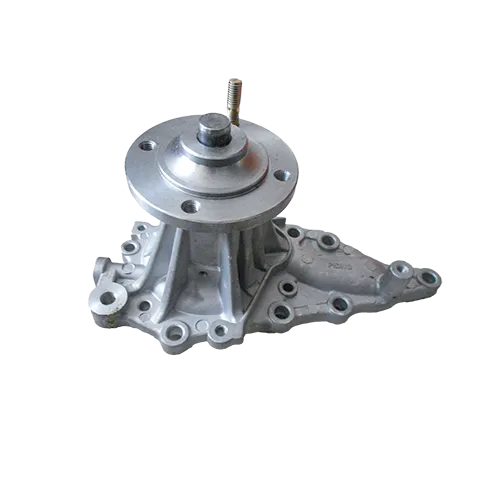Mobile:+86-311-808-126-83
Email:info@ydcastings.com
312 stainless steel composition
Understanding 312 Stainless Steel Composition
Stainless steel is a versatile material widely used in various applications due to its excellent corrosion resistance, strength, and aesthetic appeal. Among the numerous grades of stainless steel, 312 stainless steel, or 312S, stands out for its unique composition, which is tailored to meet specific operational demands in several industries. In this article, we will delve into the composition of 312 stainless steel, its properties, and its applications.
Composition of 312 Stainless Steel
The composition of 312 stainless steel typically includes a higher chromium and nickel content compared to standard stainless steel grades. The key elements in 312 stainless steel include
1. Chromium (Cr) Approximately 25-28% Chromium is the primary alloying element in stainless steel, contributing to its corrosion resistance and oxidation stability. The high chromium content in 312 stainless steel provides exceptional resistance to pitting and crevice corrosion, making it suitable for environments exposed to corrosive substances.
2. Nickel (Ni) Approximately 20-23% Nickel enhances the toughness and ductility of stainless steel. In 312 stainless steel, the elevated nickel content helps maintain excellent mechanical properties, especially at high temperatures. This is crucial in applications where materials may undergo thermal stress or rapid temperature fluctuations.
3. Silicon (Si) Approximately 1% Silicon is added to improve the oxidation resistance of stainless steels. In 312 stainless steel, a small amount of silicon aids in refining the microstructure, contributing to the overall mechanical properties and stability of the alloy.
4. Manganese (Mn) Approximately 2% Manganese plays a role in improving hot workability and strengthening the steel. Its presence in 312 stainless steel enhances the alloy's performance during manufacturing processes, including welding and shaping.
5. Carbon (C) Less than 0.8% A low carbon content is crucial for maintaining corrosion resistance. Too much carbon can lead to the formation of carbide precipitates, which can compromise the material’s performance in corrosive environments.
6. Sulfur (S) and Phosphorus (P) Minimal amounts These elements are typically kept to very low levels to avoid detrimental effects on the alloy's properties. Controlling sulfur and phosphorus content ensures higher toughness and ductility of the stainless steel.
Properties of 312 Stainless Steel
The unique composition of 312 stainless steel imparts several beneficial properties
312 stainless steel composition

- High Corrosion Resistance Thanks to its high chromium and nickel content, 312 stainless steel exhibits excellent resistance to a wide range of corrosive media, including acids and chlorides
.- Excellent High-Temperature Strength 312 stainless steel is particularly beneficial for applications subjected to elevated temperatures, retaining strength and stability under stress.
- Good Fabricability The alloy's properties allow for various fabrication methods, including welding, bending, and forming, making it adaptable for different manufacturing techniques.
- Durability The combination of elements in 312 stainless steel results in a durable material that can withstand harsh environmental conditions.
Applications of 312 Stainless Steel
Given its superior properties, 312 stainless steel finds application in several industries
- Aerospace The aerospace industry employs 312 stainless steel for components exposed to extreme temperatures and corrosive environments, such as heat exchangers and exhaust systems.
- Chemical Processing With its high resistance to corrosive chemicals, 312 stainless steel is widely used in reactors, tanks, and piping systems within chemical plants.
- Oil and Gas The oil and gas industry utilizes 312 stainless steel in downhole equipment and casings due to its ability to withstand harsh conditions.
- Food Processing Its corrosion resistance and hygienic properties make 312 stainless steel suitable for equipment and components in the food processing and dairy industries.
Conclusion
312 stainless steel is a remarkable alloy characterized by a unique composition that enhances its strength, corrosion resistance, and ability to perform under high temperatures. Its versatile applications across various industries highlight its importance as a high-performance material. As technology advances and the demand for durable and reliable materials continues to grow, the role of 312 stainless steel will undoubtedly remain significant in numerous industrial applications.
-
Why Should You Invest in Superior Pump Castings for Your Equipment?NewsJun.09,2025
-
Unlock Performance Potential with Stainless Impellers and Aluminum End CapsNewsJun.09,2025
-
Revolutionize Your Machinery with Superior Cast Iron and Aluminum ComponentsNewsJun.09,2025
-
Revolutionize Fluid Dynamics with Premium Pump ComponentsNewsJun.09,2025
-
Optimizing Industrial Systems with Essential Valve ComponentsNewsJun.09,2025
-
Elevate Grid Efficiency with High-Precision Power CastingsNewsJun.09,2025











